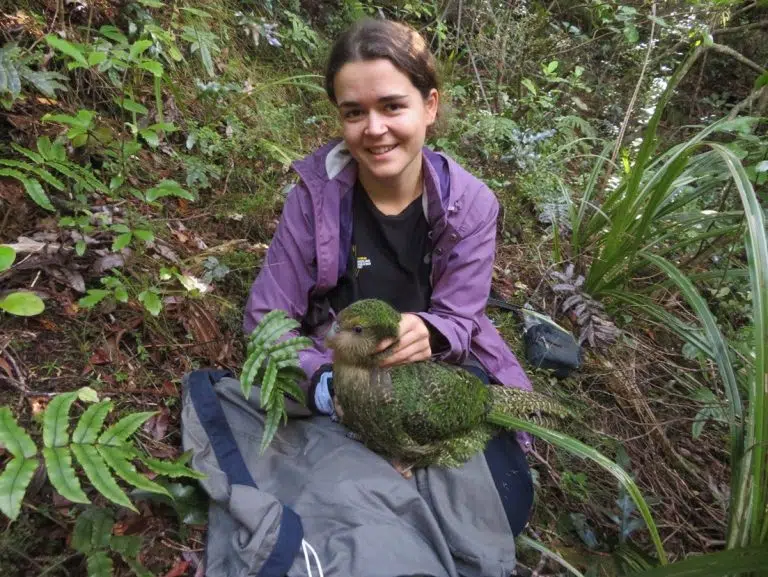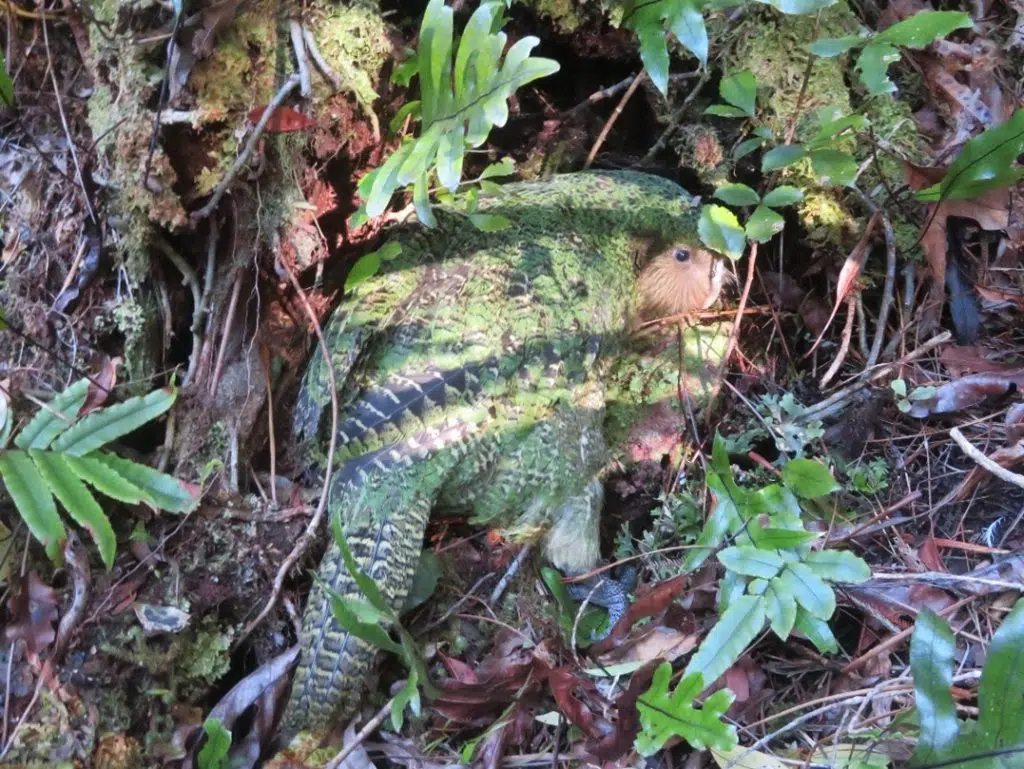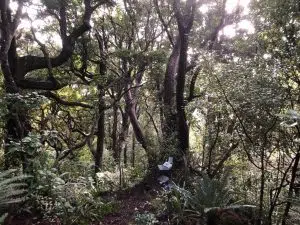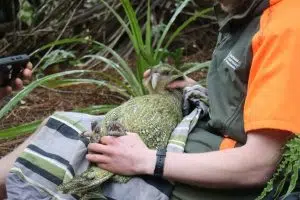Earlier this year, Alice, our Head of Discovery Programmes and resident ‘bird nerd’ at BLAKE got the opportunity to visit Whenua Hou Codfish Island and assist in the Kākāpō Recovery programme.
Kākāpō (Māori for ‘night parrot’) are nocturnal, flightless, and perhaps the longest-lived bird species in the world – estimated to reach 90 years old! Once common throughout Aotearoa New Zealand, kākāpō numbers dropped through the 1900s due to habitat loss and introduced pests. By 1995, the population had plummeted to only 51 adult birds. In order to bring this species back from the brink of extinction, the Kākāpō Recovery programme was formed in 1995 and their hard work continues today.
At the start of the current breeding season (beginning of 2022) the population has increased to around 200 birds, found on a few protected, predator-free offshore islands. One of these islands, Whenua Hou is 3km west of Rakiura Stewart Island, and is a perfect habitat for kākāpō. It has an abundance of natural vegetation and shelter, including the all important rimu trees which play an important role in the breeding of kākāpō.
When the rimu trees mast (produce seeds en masse) this leads to a bounty of food which triggers the kākāpō to breed. Using climate data and modelling, scientists are able to predict when there will be a mast event which typically happens every few years. As a result, there is only a kākāpō breeding season once every few years.
During these breeding seasons, a lot of work goes in to ensuring the survival of the kākāpō chicks. Department of Conservation (DOC) rangers are stationed out on the islands, monitoring nests and chicks. The supplementary feedout, coordinated by the Kākāpō Recovery programme, is another integral part of a successful kākāpō breeding season, and DOC recruits the help of volunteers to get the job done.
This is where Alice came in – each day she would weigh out the food for each station, pack it into her bag along with water and cleaning products, then make her way across the island to clean and restock supplementary feeding stations.
The supplementary feeding ensures that kākāpō are in good enough condition to breed and raise chicks. Each station is checked every three or four days, and the amount of food each bird has eaten is closely monitored, with any food left uneaten carried back down the hill and weighed in.
For Alice the best part about being a feedout volunteer was tramping across the entire island over the two week period.
“The native bush was beautiful, stunning views across to Rakiura, and of course the bird life. Being followed by flocks of mohua, kākāriki and kākā as I made my way through the bush was amazing. Being involved in the Kākāpō Recovery Project has been an amazing experience, and not just because I got to spend time with one of the most adorable birds species in the world. Seeing first hand the conservation efforts being carried out, and understanding what the future of biodiversity could look like in Aotearoa, makes me excited to share this experience and knowledge with tamariki and hopefully inspire them to show kaitiakitanga and care for our natural environment.” – Alice
During the two weeks on Whenua Hou, Alice was also given the opportunity to assist DOC rangers as they carry out kākāpō health checks. First, the bird is located using radio telemetry. Then a range of checks are completed including; weighing the bird, taking any swabs or blood samples if needed and checking for any signs of injury or illness. Finally, the radio transmitter is inspected to check if it’s working and to see if its fitting the bird well before it’s sent on its way.
Due to the hardwork of all involved with the Kākāpō Recovery programme, it has been a successful breeding year for the kākāpō. The population has increased by 25% during this breeding season and is currently sitting at 252 birds. Although the breeding seasons still require intensive monitoring for the kākāpō chicks, DOC is working towards a more “hands-off” approach, as well as exploring options for more breeding sites as the population continues to grow.
“Volunteers are integral in supporting the Kākāpō recovery efforts and are really fun additions to the team. If you’d like to support the recovery efforts, please donate via the link on the Kākāpō Recovery website: https://www.doc.govt.nz/our-work/kakapo-recovery/get-involved/donate/ and keep an eye out for volunteer opportunities in the next breeding season.” – Louise Porter, Kākāpō Logistics Ranger
For more regular Kākāpō Recovery programme updates, subscribe to the newsletter here: https://www.doc.govt.nz/news/newsletters/kakapo-recovery-update/
Or get regular updates from the Kākāpō Recovery Facebook and Instagram pages: https://www.facebook.com/KakapoRecovery
https://www.instagram.com/kakapo_recovery/





